Celebrating Victory in Europe Day: 75 Years of Freedom Triumphing Over Tyranny
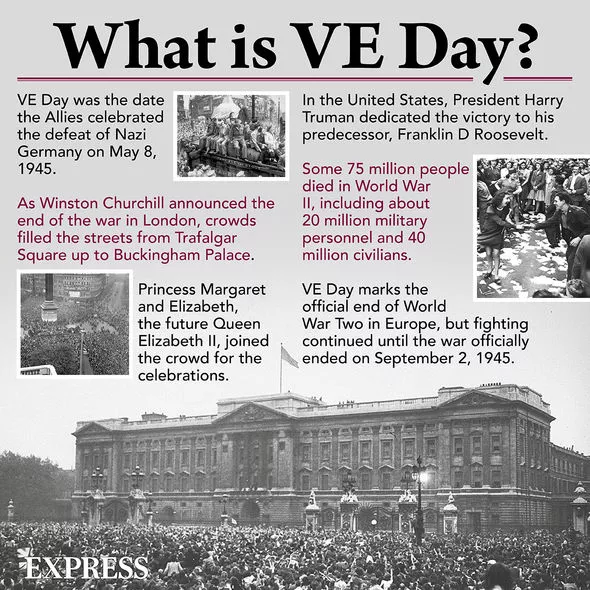
“Seventy-five years ago today, the last remnants of the Nazi regime unconditionally surrendered to the Allied Powers, marking the end of World War II in Europe. Today, we celebrate the forces of freedom who defeated tyranny and emerged victorious in that monumental struggle. We pay tribute to those who served for their service and pause to remember those who gave their last full measure in defense of the flames of liberty.”
~President Donald Trump delivers an official statement celebrating the 75th anniversary of VE-Day
The 75th Anniversary of V-E Day, May 2020
Victory in Europe Day, or as it is commonly called in England “VE Day” and “V-E Day” in the United States, is the official day celebrating the acceptance by the Allies of the defeat of the German Nazis and the unconditional surrender of their armed forces during World War II. This historic day was marked on Tuesday May 8th, 1945 and designated an official end of the second World War in Europe. Several European nations have distinguished the day in infamy, even observing it as a national holiday that remembers the triumph of freedom over Nazism, tyranny, and oppression. Appropriately, many countries also designate the day as Liberation Day, Remembrance Day, Victory Over Fascism Day, or simply Victory Day. VE Day is celebrated by former Soviet countries like Russia and Belarus on May 9th, due to the time zone difference from mainland Europe. Russia is credited with enforcing the final offensive that defeated the Nazis in the Battle of Berlin.
While this day has always remained significant, it is especially important this year in the month of May 2020 as it officially marks the 75th anniversary of the Allied victory over Nazi Germany. The significance of this universal victory is honored in the United States, as the Trump Administration gave a solemn observance of VE Day earlier this month. On May 8th, President Trump delivered a statement entitled, the “Presidential Message on the 75th Anniversary of Victory in Europe Day”, honoring the many brave soldiers who gave their lives to defeat tyranny and defeat the Axis Powers, while paying respects to the few living American soldiers who fought and survived as a testament to winning the war to this day. Today, fewer than 400,000 remain of the original 16 million American soldiers who fought in World War II; remembered today as survivors of the “Greatest Generation”. The statement reminds the U.S. of the terrible price suffered in the bloodiest war in the history of mankind. A key segment reads,
“The campaign to end fascism in the European Theater is a somber reminder of the price of freedom. More than 30 million lives were lost and tens of millions more were shattered in the war. Most of those who perished in Europe were civilians, including 6 million Jews and millions of others from Poland and the former Soviet Union. The United States also suffered incredible losses. Of the more than 2 million Americans who deployed to Europe and the Mediterranean or patrolled the Atlantic Ocean, more than 186,000 paid the ultimate sacrifice, and more than twice that number were wounded.”
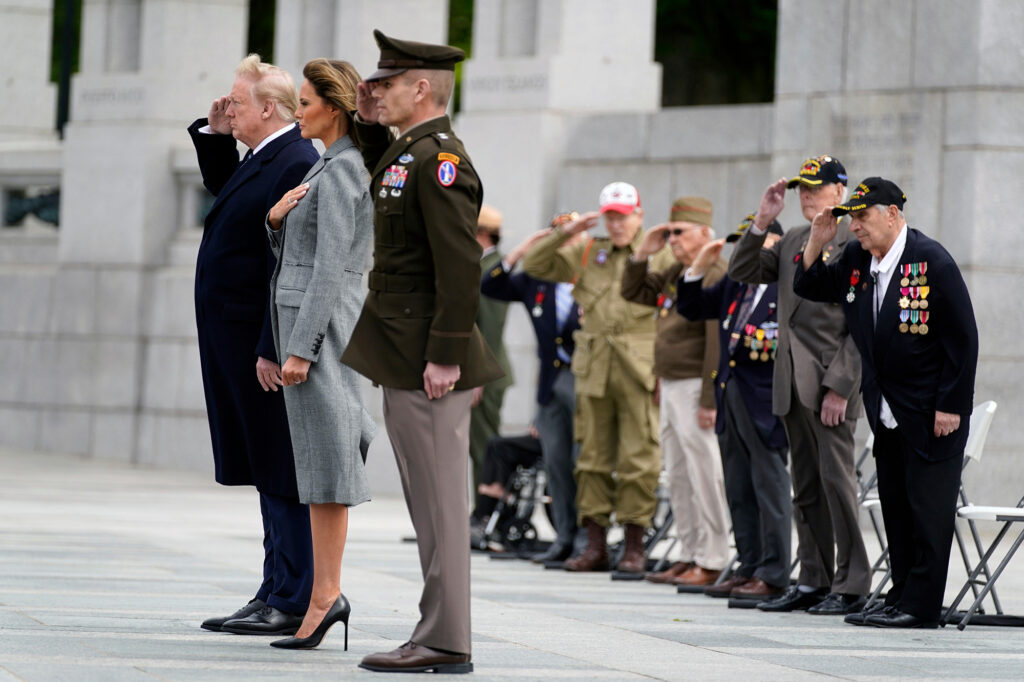

Many of those who valiantly served in battle grew up during the harshest period of financial devastation, the Great Depression, and some never had the chance of experiencing life in a financially prosperous America. Many had never even traveled outside of their home state in the U.S., yet answered the call for battle thousands of miles across the Atlantic to engage the enemy on the “beaches of France, in the forests of Belgium, on the hills of Italy, and on hundreds of other battlefields of Europe and North Africa,” according to President Trump. Even in the midst of the coronavirus pandemic as America begins the rebuilding process to our devastated economy, this statement reminds us that we have overcome greater levels of adversity, such as the aftermath of the first World War producing the Great Depression, and are prepared to revitalize our economy for the better. The next section of this article will examine many key factors and important events that ultimately lead to the Allied Forces supreme victory in the war and the Nazis subsequent surrender.
Background to Battle of the Bulge, the final Nazi offensive
The beginning of the end for Nazi Germany came with their final armed offensive on the Western Front, taking place from December 16, 1944 to January 25 1945. The offensive was launched from three key areas: northeast France, the densely forested Ardennes region of Wallonia in eastern Belgium, and Luxembourg. Hitler had launched the offensive with the intention of halting the Allies utilize the major Belgian seaport of Antwerp, severe the Allied lines which would then allow German forces to encircle and destroy four Allied armies (United States, England, Canada and Belgium) in the region. It was by this that Hitler sought to force the Allied nations into a peace treaty that would unduly benefit the Axis powers.
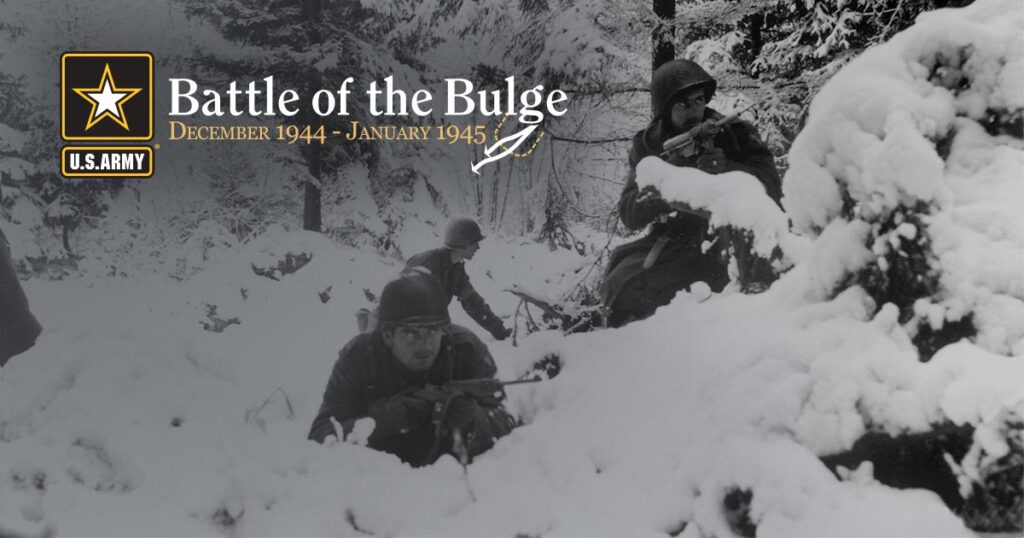
The Germans utilized the advantage of nights being longer than the days in this part of the world, granting troops the liberty of operating under a cloak of secrecy as they situated themselves for battle. Due to attacking a poorly defended portion of the Allied line and bad weather blocking adequate aerial reconnaissance the Germans had a total surprise against the Allies when the battle began on the morning of December 16. The area they attacked also contained terrain that was lousy for Allied army tank movement, but German forces lacked an adequate amount of fuel to propel them fully into Antwerp.
The Americans fully defended control over Bastogne, crippling part of the Nazi’s plan to gain access to roads in the northwest. But a penalty of this battle caused the Americans to bear the brunt of casualties, sustaining the highest loss of American troops during the war. This worked both ways as the battle also severely reduced the number of German troops, most of whom were unable to be replaced. The terrain set-back the German advance, allowing for Allied troops to reinforce those who were attacked on the line. Weather conditions improved on Christmas Eve, allowing for the Allies to launch successful airstrikes against German ground troops and destruction of their supply lines, guaranteeing the offensive’s demise. General Patton’s resourcefulness was particularly helpful in the Allies victory, as he was able to improvise his tactics on short notice to the surprise of Germany’s thwarted predictions.
Patton would successfully lead the Third Army to Bastogne from the south, officially ending the siege. The battle was costly, particularly for the Germans, as many experienced German units were left severely depleted of both men and equipment, while the remaining survivors hastily retreated to the defenses of the Siegfried Line (the German Westwall), opposite the French Maginot Line. According to data from the 1994 book “Hitler’s Last Gamble”, the Nazis’ total offensive strength upon being reinforced amounted to nearly 450,000 troops, 1,500 tanks and assault guns vs. the 610,000 American troops. Between 63,222 and 98,000 German troops went missing, got captured or were killed, vs. the 19,000 American troops dying in battle out of roughly 89,000 troops affected. The Battle of the Bulge marked the largest and bloodiest battle the U.S. engaged in during World War II and thus one of the deadliest battles in all of U.S. history.
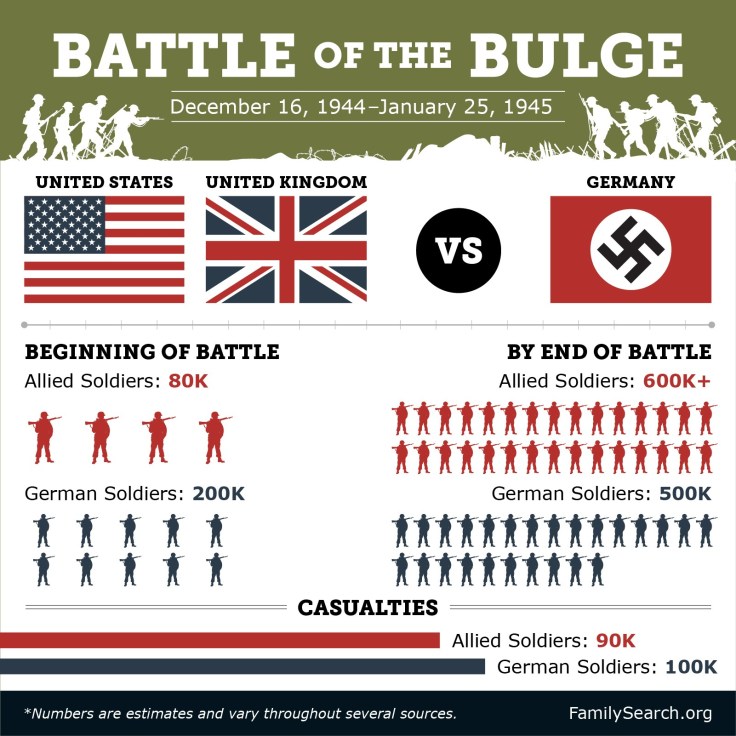
Hitler’s surrender, supposed “suicide” and escape to Argentina
By the Spring of 1945, the American, Soviet and British troops met each other in Berlin. German soldiers were forced to commit unconditional surrender and halt their continual shooting at Allied soldiers. As recorded in historical accounts, Adolf Hitler supposedly committed suicide on his birthday, April 30th, 1945 during the Nazi defeat at the Battle of Berlin. The Battle saw the Soviet Union and Poland’s unified armies encircle Berlin and beginning April 16th, two Soviet armies attack the city from the east and south, as a third overran German forces stationed north of Berlin. The 1st Belorussian Front of the Red Army led by Marshal Georgy Zhukov had advanced from the east and north, and began shelling the center of Berlin, while Marshal Ivan Konev’s 1st Ukrainian Front broke through the Nazi Army Group Centre defenses, marching toward Berlin’s suburbs to the south. Over the course of one week leading to April 30th, the Red Army gradually conquered the entire city. While the city’s garrison surrendered on May 2nd, fighting in parts of the city continued until the official end of the war in Europe on May 8th, hence V-E Day. Though traditional historical accounts allege that Adolf Hitler committed suicide on April 30th, there have been a number of scholars that say otherwise, pointing to evidence that Hitler in-fact staged his suicide and secretly escaped to Argentina where he lived many years after the conclusion of the war.
This all began in 2009 when three U.S. professors assessed Hitler’s remains and made shocking discoveries that revealed how the body alleged to be Hitler’s, upon DNA examination, belonged to a middle-aged woman whose identity remains unknown. These findings confirm Joseph Stalin’s suspicions after Russia claimed the body and skull following their victory at the Battle of Berlin, and were unable to verify any eye witnesses or physical evidence of Hitler and Eva Braun ever dying in the bunker in Berlin on April 30, 1945.
In addition to information from the TV series “Hunting Hitler”, the foremost scholarly analysis on this subject and the true whereabouts of Hitler’s escape are examined in Dr. Jerome Corsi’s revelatory 2017 book, “Hunting Hitler: New Scientific Evidence That Hitler Escaped Nazi Germany”. Dr. Corsi notes that extensive FBI and CIA records maintained at the National Archives that seriously consider reports after World War II that Hitler escaped to Argentina. In addition to this, more recent evidence points to the possibility of Hitler escaping to Indonesia, where he was married and even worked at a hospital in Sumbawa. To cement this suspicion, even Thomas J. Dodd, chief of the US trial counsel at Nuremburg, stated that “No one for sure can say Adolf Hitler is dead.” Dr. Corsi’s book examines each of the possibilities surrounding Hitler’s staged suicide and subsequent escape, while also shedding light on his potential plans for revenge through plotting the rise of a Fourth Reich.
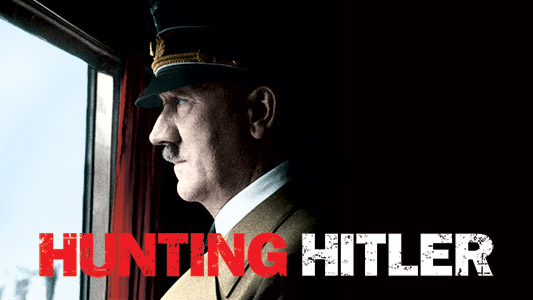
The Significance of V-E Day today
V-E Day holds the same level of significance this month 75 years later, as it did when first conceived on May 8th, 1945. At the U.S. World War II Memorial, President Trump and First Lady Melania Trump honored V-E Day by paying respects to the many American lives lost during the world’s most tragic war, while paying respects to some of the few American veterans alive who valiantly served in the war. While President Trump made no public remarks, he and the First Lady each placed a hand on the commemorative wreath before standing and saluting as a bugler played taps. They also paused to read important inscriptions throughout the memorial. Some of the most valiant veterans in attendance were those who participated in the deadliest day of battle, the 1944 D-Day invasion that turned the tide of the war. This included “Steven Melnikoff, 100, of Cockeysville, Md., Guy Whidden, 97, of Braddock Heights, Md., Harold Angle, 97, of Chambersburg, Pa., and Frank Devita, 96, of Bridgewater, NJ.” Devita was among the youngest of the group, who are some of the last living veterans from the Greatest Generation.
Many European nations have also held ceremonies to honor the significance of V-E Day, such as in England where Queen Elizabeth delivered a profound speech on behalf of the royal family celebrating the 75th anniversary. Queen Elizabeth, who is iconically photographed standing next to Winston Churchill during the first official celebration of V-E Day in Europe on May 8th, 1945, understands more than most the horrors of war in England and all that the Allied forces overcame to conquer the Axis Power, eradicate Nazism, and restore peace and prosperity to European nations. Her speech inspires a sense of courage and persistence to never lose faith, even in the midst of a bleak global tragedy of war (or as in modern day, a global pandemic in the form of covid-19), and to persevere faith to the very end no matter the difficulty. A key excerpt reads as such,
“At the start, the outlook seemed bleak, the end distant, the outcome uncertain. But we kept faith that the cause was right – and this belief, as my father noted in his broadcast, carried us through. Never give up, never despair – that was the message of VE Day. I vividly remember the jubilant scenes my sister and I witnessed with our parents and Winston Churchill from the balcony of Buckingham Palace. The sense of joy in the crowds who gathered outside and across the country was profound, though while we celebrated the victory in Europe, we knew there would be further sacrifice.”
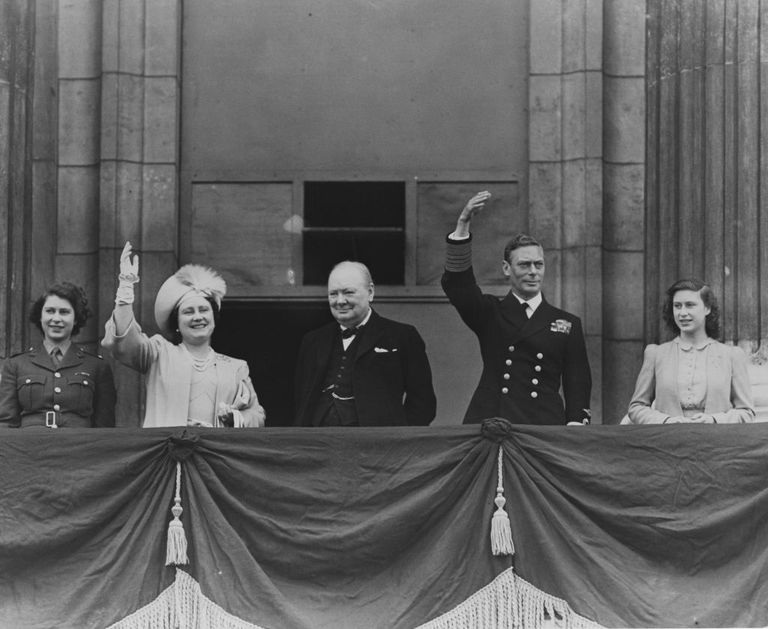
So this memorial day, let us especially honor those who gave the ultimate sacrifice during World War II and honor their profound legacy by respecting our nation’s veterans and upholding the patriotic values that they fought for, which has established the United States as the greatest nation in the history of the world.
Category: Socrates Corner






